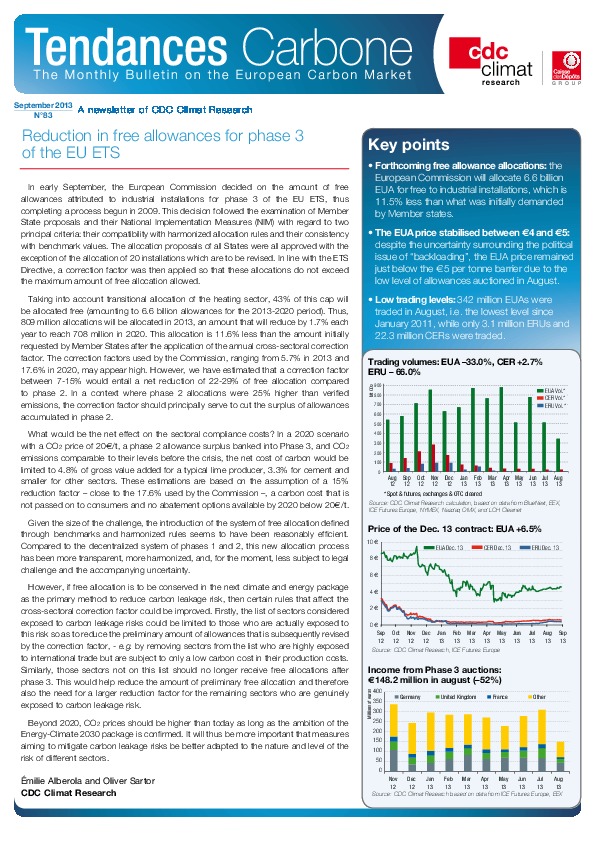Reduction in free allowances for phase 3 of the EU ETS
![]() Forthcoming free allowance allocations: the European Commission will allocate 6.6 billion EUA for free to industrial installations, which is 11.5% less than what was initially demanded by Member states.
Forthcoming free allowance allocations: the European Commission will allocate 6.6 billion EUA for free to industrial installations, which is 11.5% less than what was initially demanded by Member states.
![]() The EUA price stabilised between €4 and €5: despite the uncertainty surrounding the political issue of “backloading”, the EUA price remained just below the €5 per tonne barrier due to the low level of allowances auctioned in August.
The EUA price stabilised between €4 and €5: despite the uncertainty surrounding the political issue of “backloading”, the EUA price remained just below the €5 per tonne barrier due to the low level of allowances auctioned in August.
![]() Low trading levels: 342 million EUAs were traded in August, i.e. the lowest level since January 2011, while only 3.1 million ERUs and 22.3 million CERs were traded.
Low trading levels: 342 million EUAs were traded in August, i.e. the lowest level since January 2011, while only 3.1 million ERUs and 22.3 million CERs were traded.
